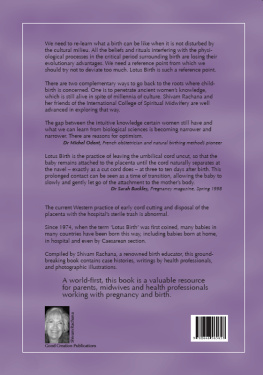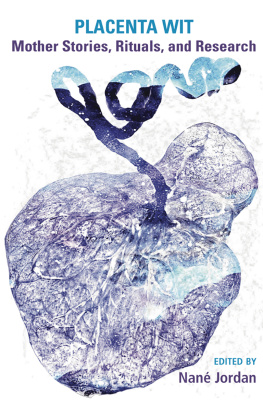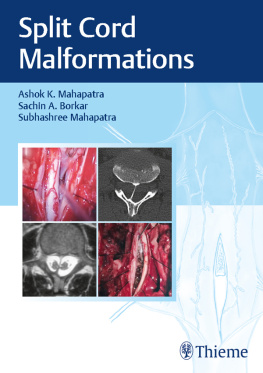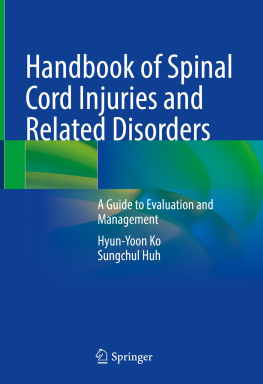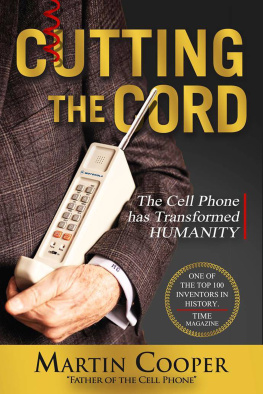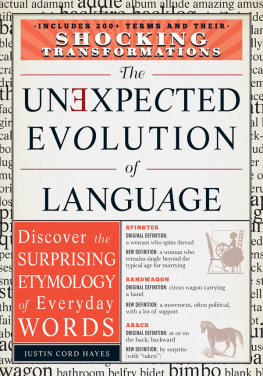Shivam Rachana - Lotus Birth: Leaving the Umbilical Cord Intact
Here you can read online Shivam Rachana - Lotus Birth: Leaving the Umbilical Cord Intact full text of the book (entire story) in english for free. Download pdf and epub, get meaning, cover and reviews about this ebook. year: 2013, publisher: BookBaby, genre: Religion. Description of the work, (preface) as well as reviews are available. Best literature library LitArk.com created for fans of good reading and offers a wide selection of genres:
Romance novel
Science fiction
Adventure
Detective
Science
History
Home and family
Prose
Art
Politics
Computer
Non-fiction
Religion
Business
Children
Humor
Choose a favorite category and find really read worthwhile books. Enjoy immersion in the world of imagination, feel the emotions of the characters or learn something new for yourself, make an fascinating discovery.
- Book:Lotus Birth: Leaving the Umbilical Cord Intact
- Author:
- Publisher:BookBaby
- Genre:
- Year:2013
- Rating:5 / 5
- Favourites:Add to favourites
- Your mark:
Lotus Birth: Leaving the Umbilical Cord Intact: summary, description and annotation
We offer to read an annotation, description, summary or preface (depends on what the author of the book "Lotus Birth: Leaving the Umbilical Cord Intact" wrote himself). If you haven't found the necessary information about the book — write in the comments, we will try to find it.
Lotus Birth is the practice of not cutting the umbilical cord immediately after the babies are born, and leaving it attached to fall off by itself. When the reasons are understood and the resulting peacefulness of the babies is seen, it becomes the most logical thing to do.
There is no medical reason to cut the cord.
This practice highlights and calls into question the standard practice of immediate cord clamping and the recently popularized cord blood banking procedure which places the newborn in a highly compromised situation, depriving it of 30% to 50% of its full quota of blood. This is the amount of blood in the cord and placenta at birth, and which is, in the natural order, destined to fill the infants major organs. There are grave ethical issues here.
Immediate cord clamping, which is current obstetric practice leaves the mothers body coping with the implosion that results from the clamping, leaving her more susceptible to post-partum haemorrhage (PPH).
Lotus-born babies have a fully healed navel a few days after birth, whereas most babies have a cord stump, which is susceptible to infection and takes on average two weeks to drop off.
There is no research on the long-term consequences of depriving the newborn of this extremely valuable cord blood which is full of stem cells, iron and enzymes..
The practice has been driven by hospital timetables, not by infantmother welfare.
Traditional midwifery practice was to ensure that the cord was milked, ensuring that the baby received the full quota.
As the number of maladies in the general population increases rather than diminishes in spite of increased knowledge and services, we may well ask if the practices at the beginning of life endanger rather than enhance our long-term well being.
This remarkable book, a world first publication on the subject, provides a most thorough explanation and exploration of this primal experience that we all have when we are born. There are contributions from doctors, philosophers ,midwives, anthropologists, psychologists, doulas and the parents of Lotus Born children given a breath and depth to the discussion and the information.
This is a book that will take you into the unknown and leave you greatly enriched by the experience. It speaks of the true nature of your cells and the basic primal needs of your mammalian nature. it may also enrage you as you realize what has happen to you and, if you have them, to your children.
This book inspires and gives great hope as you read the stories of wonderful natural births and families who have taken their lives into their own hands with inspiring outcomes.
Shivam Rachana: author's other books
Who wrote Lotus Birth: Leaving the Umbilical Cord Intact? Find out the surname, the name of the author of the book and a list of all author's works by series.

